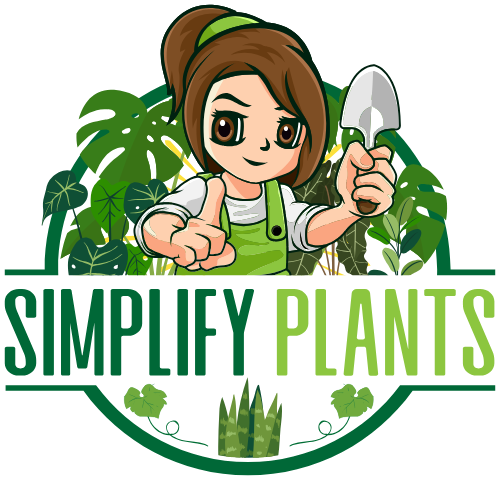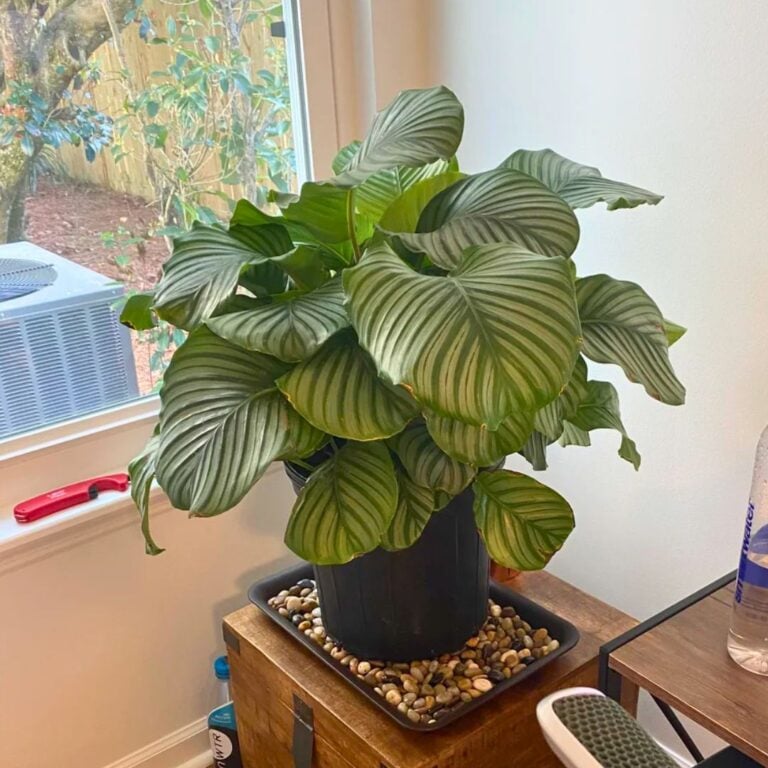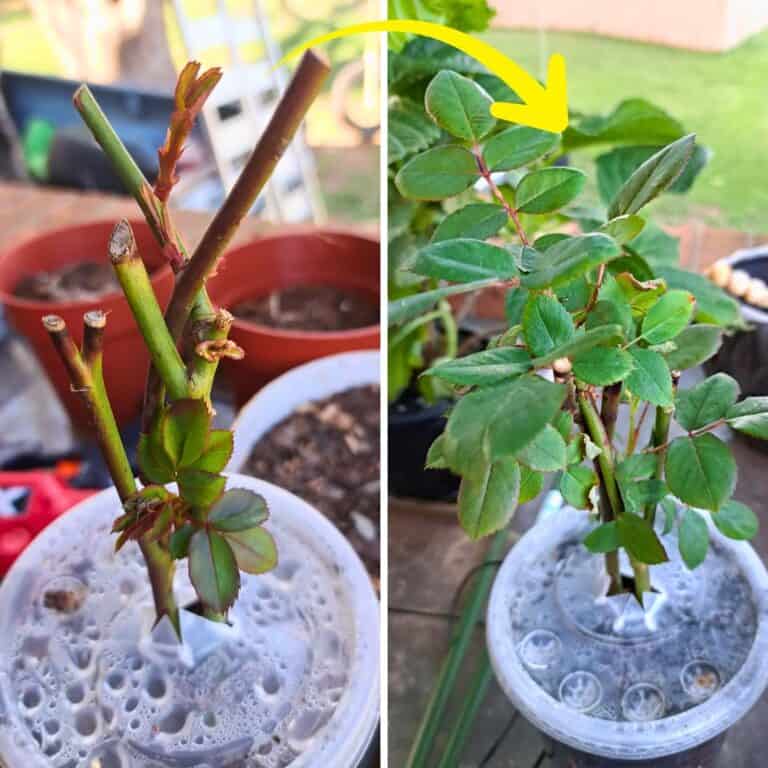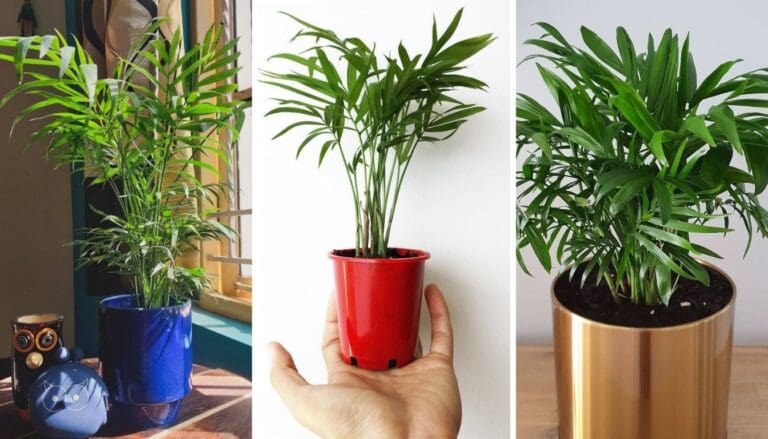5 Ways to Dust Leaves Without Damaging Them
I love keeping my plants healthy, but wow—dust seems to build up on their leaves way faster than I expect. It dulls their look and can even block the light they need, which is honestly a little annoying.
Clean leaves just stay healthier and grow better when you care for them the right way.
I’ve tried a bunch of different methods, and honestly, some work way better than others. Here are the simple ways I use to remove dust gently, why it actually matters, and how I keep up with regular care so my plants always look fresh and happy.
Please note: Simplify Plants is reader-supported. As an Amazon Associate, I earn from qualifying purchases made by our readers with no extra cost added to you all! Some links in the post are affiliate links and I get a commission from purchases made through links in the post.
1) Use a soft paintbrush to gently remove dust
I like using a soft paintbrush because it lets me reach every part of the leaf without scratching anything. The bristles are smooth and just glide over the surface—super easy for lifting dust without tearing or bending the leaf.
When I clean, I always move the brush in one direction instead of going back and forth. That way, dust doesn’t just get pushed around or ground in.
A brush with clean, dry bristles is key. If the brush is dirty, it just makes things worse, so I tap it outside after each use.
For bigger plants, I grab a larger brush, and for tiny or delicate leaves, I switch to a fine art brush. That way, I can handle each plant with the right amount of care.
This method is my go-to when I want a quick touch-up. It’s simple, gentle, and doesn’t need water or anything fancy. It keeps my plants looking fresh with almost zero risk of damage.
2) Wipe leaves with a damp microfiber cloth

I’m a big fan of the microfiber cloth method. It’s soft, gentle, and doesn’t scratch up the leaves. Plus, it picks up dust really well.
I get the cloth just a little damp with plain water—definitely not soaking. Too much water leaves spots or drips into the soil, which isn’t great.
I hold the leaf steady with one hand and wipe with the other, moving in one direction. No rubbing back and forth, because that just risks bending or tearing the leaf.
For bigger leaves, I fold the cloth and go section by section. Small leaves just need a quick swipe.
If the cloth gets dirty, I rinse it out before moving on. A clean cloth just works better and keeps me from spreading dust around.
3) Spray leaves lightly with water and wipe with a soft cloth

I like to mist the leaves with a spray bottle before wiping. A light spray loosens the dust so it comes off more easily—just don’t soak the plant, or you’ll have water dripping everywhere.
After spraying, I use a soft cloth (microfiber or cotton, usually). These don’t scratch the leaves, and I fold the cloth so I can keep using a clean section as I move along.
I hold each leaf gently and wipe from the base toward the tip. For really big leaves, I support them with both hands.
If a leaf is tiny or delicate, I try not to press too hard. The goal is to clean, not to bruise.
I rinse the cloth often so I’m not just moving dust around. A clean cloth makes the job easier.
This method works for most houseplants and keeps them looking fresh and healthy.
4) Use a handheld air blower on low setting
A handheld air blower is great when I want to clean leaves without actually touching them. It blows dust away fast and keeps the leaf surface safe.
I always set the blower to low power—anything stronger can bend or even rip delicate leaves, which is not what I want.
This trick is perfect for plants with tons of little leaves. I can get into those tight spaces where a cloth or brush just won’t fit.
I keep the blower a few inches away from the plant. That way, the air spreads out and doesn’t hit the leaves too hard.
It’s also a time-saver. Instead of wiping each individual leaf, I can clean the whole plant in just a few minutes.
Sometimes I use this outside so the dust doesn’t just settle back in my house. If I’m indoors, I aim the dust toward an open window or door.
As long as I keep the setting low and don’t get too close, I can get rid of dust while keeping the plant’s natural shine and shape.
5) Gently rinse leaves under lukewarm water

I like using lukewarm water—cold water can shock the leaves, and hot water is just risky. A gentle rinse washes off dust without scrubbing or fuss.
I hold the plant over the sink or take it outside with a small watering can. I pour the water slowly so it just flows over the leaves and carries the dust away.
For bigger plants, I sometimes use a handheld shower head on the lowest setting. I keep the spray soft and angle it so the water hits both the top and bottom of the leaves.
After rinsing, I let the plant sit and air dry. I don’t wipe the leaves right away since they’re a bit fragile when wet. If water pools at the base, I empty the saucer so the roots don’t stay soggy.
This works best for plants with smooth, sturdy leaves. If the leaves are fuzzy or super delicate, I skip rinsing and stick with a softer method.
Why Gentle Leaf Care Matters
I make time to clean my plant leaves because it keeps them healthy and looking their best. When I’m careful, I avoid damage and help my plants stay strong for the long haul.
Benefits of Dust-Free Leaves
Dust on leaves blocks light. Plants need light for photosynthesis, and even a thin layer of dust can slow things down. Clean leaves give my plants the best shot at growing well.
Dust-free leaves also look brighter and just more alive. A clean surface really brings out the leaf’s natural shine, which makes any plant pop in my space.
I’ve noticed fewer pest problems when I wipe leaves regularly. Dust can hide tiny bugs like spider mites or mealybugs, and cleaning makes it easier to spot trouble early.
A clean leaf surface also helps plants “breathe” better. Leaves take in carbon dioxide through little pores called stomata, and if those get clogged, the plant struggles.
Common Risks of Improper Cleaning
If I scrub too hard, I can tear or bruise the leaf. Even soft-looking leaves can be super delicate, so rough handling leaves marks that don’t go away.
Using the wrong tools is another problem. Paper towels, stiff brushes, or anything scratchy can scrape the surface. I stick with soft cloths or gentle sprays for safety.
Harsh cleaners are risky, too. Stuff like soap with additives or household sprays can burn the leaf. Plain water or something super mild is just safer.
I also watch out for overwatering while cleaning. Too much water can leave spots, mold, or rot. I use just enough moisture to get the dust off—nothing more.
Best Practices for Ongoing Leaf Maintenance
I keep my plants healthy by staying consistent with cleaning and using the right tools. That way, dust doesn’t get a chance to pile up and my leaves always look fresh.
Frequency of Cleaning
I clean my plant leaves about once every 1–2 weeks. Dust builds up fast indoors, especially near windows or vents, so I keep an eye out. If I see a visible layer of dust sooner, I don’t wait—I just clean them.
I adjust based on the plant, too. Plants with large, smooth leaves (like monstera or rubber plants) need more frequent care. Smaller or textured leaves don’t get as dusty, so I clean them less.
When I water my plants, I check the leaves. If they look dull, I wipe them down. Making leaf care part of my regular routine keeps it from becoming a big chore.
Here’s a quick guide I go by:
- Weekly: Large-leaf plants in busy rooms
- Every 2 weeks: Most houseplants
- Monthly: Smaller or less dusty plants
Safe Tools and Products to Use
I use soft, non-abrasive tools to avoid scratches. A clean microfiber cloth is my favorite for wiping leaves. For delicate plants, I’ll use a soft brush or even a cotton pad for those tricky spots.
When I need extra cleaning, I stick with lukewarm water. I skip soaps, oils, or commercial sprays—they can block pores or leave residue. If I see water spots, I blot gently with a dry cloth instead of rubbing.
Sometimes I use a small spray bottle to mist leaves before wiping, just to loosen things up. For really big plants, I’ll put them in the shower and rinse with low water pressure.
I never use rough sponges, paper towels, or strong cleaners. Those just scratch up the leaves and slow their growth. By keeping my tools simple and gentle, I protect the leaves while keeping them clean.
Frequently Asked Questions
I keep my plants healthy by using soft tools, gentle water, and safe cleaning methods. I stay away from harsh products or rough handling that could damage the leaves.
What’s the gentlest method to remove dust from delicate plant leaves?
I use a soft paintbrush to sweep away dust. It’s light enough not to scratch or tear thin leaves.
Can I use a damp cloth to clean my indoor plant leaves, or will that harm them?
Yes, I wipe with a damp microfiber cloth. I make sure it’s only slightly wet so the leaf surface doesn’t get damaged.
Are there any household items I can use to safely dust my plants?
I often use a clean microfiber cloth or a soft brush. Both are gentle and easy to find at home.
How often should I be dusting the leaves of my houseplants?
I dust every 2 to 4 weeks. If I notice buildup sooner, I clean them right away.
What should I avoid doing when cleaning dust off my plant leaves to prevent damage?
I avoid using paper towels, rough cloths, or strong sprays. These can scratch or stress the leaves.
Is it safe to use leaf shine products for dusting, or are they harmful to plants?
I tend to skip leaf shine products. They might block the pores on leaves, which can make it tough for your plant to breathe.
Recommended Garden Supplies
| Product Image | Our Recommended Gardening Supplies | Check Offers! |
|---|---|---|
Top Top
Top
Top
Top
Top
Top
Top
Top | rePotme Houseplant and Tropical Classic Potting Soil Mix | Check Offer On Amazon |
 Top
Top
Top
Top
Top
Top
Top
Top | Espoma Organic Indoor Plant Food | Check Offer On Amazon |
 Top
Top
Top
Top
Top
Top
Top
Top | GooingTop LED Grow Light 6000K Full Spectrum Clip Plant Growing Lamp | Check Offer On Amazon |
 Top
Top
Top
Top
Top
Top
Top
Top | Soil Moisture Meter | Check Offer On Amazon |
 Top
Top
Top
Top
Top
Top
Top
Top | Govee Hygrometer Thermometer, Bluetooth Enabled! | Check Offer On Amazon |
 Top
Top | LEVOIT Humidifiers for Large Room(Best For Plants) | Check Offer On Amazon |
 Top
Top
Top
Top
Top
Top
Top
Top | Upgraded DIY Automatic Drip Irrigation Kit, 15 Potted Houseplants Support | Check Offer On Amazon |
 Top
Top
Top
Top
Top
Top
Top
Top | Stainless Steel Heavy Duty Gardening Tool Set | Check Offer On Amazon |
 Top
Top
Top
Top
Top
Top
Top
Top | Bonide Insecticidal Soap | Check Offer On Amazon |
 Top
Top
Top
Top
Top
Top
Top
Top | Bonide 32 oz Spray Neem Oil for Organic Gardening | Check Offer On Amazon |
 Top
Top
Top
Top
Top
Top
Top
Top | Garden Safe Fungicide | Check Offer On Amazon |
Note: Some images in the articles are sourced from Reddit and Other Platforms For Reference Purpose.






